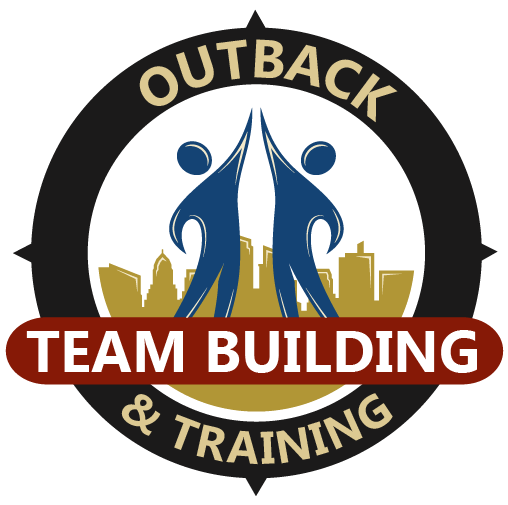
Friction in the office is rarely seen as an opportunity to build better relationships but with these four ways to manage conflict in the workplace, you can help your employees become a stronger and more cohesive team.

Friction in the office is rarely seen as an opportunity to build better relationships but with these four ways to manage conflict in the workplace, you can help your employees become a stronger and more cohesive team.
When you have a group of high-performing employees who aren’t reaching their potential due to clashes in the office, you know you need strategies for conflict resolution in your workplace ASAP. But it’s not always as straightforward as sitting down with the two parties and telling them to work it out.
Not all conflict is the same. There are lots of reasons your team may be having trouble seeing eye-to-eye, including:
- Different work processes and styles
- Lack of communication
- Misunderstandings
- Personality
- Misperceptions and unconscious biases
- Generational differences
No matter what the cause, it’s clear that workplace conflict can cause more than just bruised egos and bad blood, especially without effective conflict resolution strategies. In 2014, Workfront.com released the following statistics:
- 39% of office workers reported that productivity suffers most from conflict
- 32% said that they think conflict results in low morale and more turnover
- 30% of those surveyed believe conflict distracts from business opportunities
- 1 out 4 employees said trying to avoid conflict results in illness or absences from work
Left unmanaged, small disputes and trivial grudges can morph into much larger problems. But with the right conflict management strategies, you can help your team use clashes in the office to benefit your working relationships by:
- Learning how to identify all kinds of conflict among your employees
- Changing your team’s perception of conflict and differing opinions
- Implementing four conflict resolution strategies in your workplace
To learn more, you can read the guide below or download it for free in an all-in-one PDF.
Table of Contents
- Part One: Identifying Conflict on Your Team
3 Ways to Know If You Need to Manage Conflict in Your Workplace
- Understand how to recognize common conflict behaviors
- Speak with employees you suspect to be in disagreement
- Determine the best course of action to take as a leader
- Part Two: Turning Conflict into Growth Opportunities
Better Manage Conflict in the Workplace by Changing Your Team’s Perception
- Teach your employees not to fear ruffling feathers
- Encourage healthy debates and disagreements
- Use conflict as the basis for improvement
- Part Three: Workplace Conflict Resolution Strategies
4 Tactics to Manage Conflict and Reduce Tension Between Colleagues
- Help your employees get to know each other outside of work
- Define acceptable and productive conflict for your office
- Ensure team members understand each other’s strengths
- Improve processes that frequently result in frustrated employees
Part One: Identifying Conflict on Your Team
3 Ways to Know If You Need to Manage Conflict in Your Workplace
These are the first steps you should take before managing conflict in the workplace

Your priority as a manager is running a cohesive team but not all conflicts will necessarily need your intervention. As you’ll read in Part Two of this guide, sometimes it’s good to let your colleagues hash it out on their own before taking any drastic measures.
So, before you get involved, here’s how you can evaluate the situation to decide whether you need to take action or if it’s a conflict they can work through without your intervention.
These are three ways you can identify if your employees would benefit from conflict resolution strategies.
- Look for Common Conflict Behaviors – Although it would be easier to categorize all conflict under the same umbrella, it likely isn’t what’s best for your organization.
One of the easiest ways to identify whether or not you need to mediate a situation is to look for common behaviors that are associated with negative conflict.
Fortunately for you as a manager, many of these behaviors are quite obvious. For example, if a member of your team is openly unhappy during an exchange or comes to you with a complaint about a colleague, you clearly know there’s an issue and can turn to your conflict resolution strategies.
However, there are also more subtle clues that employees may display during a clash with a colleague that should also be on your management radar, such as:
- Being Overly Competitive – If a member of your team all of a sudden becomes aggressively competitive with a coworker, their behavior may stem from an unresolved conflict with that person.
- Acting Inexplicably Angry – Employees who inappropriately erupt in anger for seemingly no reason are likely dealing with buried frustrations with a colleague or process.
- Avoiding Others – Keep an eye on the everyday interactions of your employees. Should members of your team stop touching base with each other or avoid interacting in meetings, they could be dealing with an interpersonal conflict.
- Withdrawing Themselves - When someone who was previously vocal in meetings or group huddles stops contributing, it's time to dig deeper into what the issue may be. They could feel insecure speaking in front of a colleague they’re in conflict with or hope to avoid further friction.
- Being Overly Competitive – If a member of your team all of a sudden becomes aggressively competitive with a coworker, their behavior may stem from an unresolved conflict with that person.
- Open Up the Dialogue – If you’ve recognized that two or more of your employees are in conflict with each other, the next step is to speak with them directly.
Connect with the members of your team individually at first. Meeting with them one-on-one gives your employees the chance to open up, without feeling like they may be attacked by the person they are in conflict with.
This is not the time to try and solve the issue and implement conflict resolution in your workplace. At this point, you are simply trying to understand if there is a problem and encourage your team member to be open and honest with you.
Do the best you can to avoid sounding judgmental or accusatory. One of the best ways to achieve this is to use fact-based statements, followed by open-ended questions. Here are a few examples to help you get the dialogue started:
- I’ve noticed that you’ve been really quiet in our meetings lately. That doesn’t seem like you. Is there anything at work that’s upsetting you?
- This morning, you were quite angry when your laptop battery died during our pulse huddle. Why did that bother you so much?
- You have been putting Tom down frequently when I’ve assigned him a task. Can you explain where that’s coming from?
- You and Charlotte used to go for coffee all the time, but I’ve noticed that’s stopped. Is there a reason for that?
- I’ve noticed that you’ve been really quiet in our meetings lately. That doesn’t seem like you. Is there anything at work that’s upsetting you?
- Determine What Actions to Take Next – After speaking with your team individually, you’ll have confirmed whether the issue requires you to step in and manage the conflict or let it run its course.
Referencing our list from before, any of the following issues could lead to a full-blown conflict that would need actionable conflict resolution management:
- Different Workstyles - Colleagues may tackle tasks in different ways leading to frustration in a team’s workflow. If this is a common issue for your employees, our team recommends Discovering Workstyles With DiSC to help colleagues better understand their unique workstyles and how they can collaborate best.
- Lack of Communication – It can be easy to forget that not everyone in your organization will have all the same details you do but effective communication is essential in keeping harmony among teams and different departments. Regular meetings, email summaries, and lots of details can all help mitigate unnecessary conflict. You can further your team’s verbal and written communication skills with a training program like Clear Communication.
- Misunderstandings - Perhaps your team member is unclear about the scope of a project or the expectations of their role. Whatever the misunderstanding is, communication is an actionable step you can take to iron out the conflict. You can also check out our blog post, 8 Performance Improvement Tips for Managing Underperforming Employees, for more advice on how to deal with a struggling team member.
- Colleague Clashes - Not all employees will get along and that’s okay. They do, however, have to figure out how to work together. If warring personalities are getting in the way of your team’s productivity, you can try Positive Team Dynamics, a training program that can help you and your employees create a framework for what a successful group within your organization looks like.
- Misperceptions – Due to unconscious biases, some members of your team may have a skewed idea of their coworkers. The best way to help employees better understand their colleagues is to get them out of the office and encourage them to get to know each other away from their work. Team building activities can provide a no-pressure, fun scenario that can help your team bond and see past their misperceptions. More on this in Part Three of this online guide.
- Generational Differences - Discrepancies in age can play a large factor in employee conflict. This can include how work itself should be done, office attire, or even the formality of an email correspondence. Read our blog post, 3 Key Tactics for Creating a Multigenerational Company Culture, for advice on how to help your team thrive.
- Different Workstyles - Colleagues may tackle tasks in different ways leading to frustration in a team’s workflow. If this is a common issue for your employees, our team recommends Discovering Workstyles With DiSC to help colleagues better understand their unique workstyles and how they can collaborate best.
-
- Trivial Gossip - An employee may hear something their colleague said out of context, or they may misunderstand a comment entirely and jump to conclusions. This type of discussion between team members rarely requires intervention from management.
- Personality - Not all colleagues have to be close personal friends. Try not to overreact if members of your team seem to always have conflicting opinions or perspectives. If they can be productive as a group, let them work through their differences on their own.
- Heated Debates – If a couple of your employees are in the midst of a passionate workplace discussion, try not to immediately jump in. Innovative solutions may be bubbling just below the surface. Let the conversation continue, so long as it’s heading in a productive direction.
- Trivial Gossip - An employee may hear something their colleague said out of context, or they may misunderstand a comment entirely and jump to conclusions. This type of discussion between team members rarely requires intervention from management.
Part Two: Turning Conflict into Growth Opportunities
Better Manage Conflict in the Workplace by Changing Your Team’s Perception
Conflict has a negative connotation for many, but it can be a powerful tool if you approach it with positivity

If your first instinct as a manager is to implement conflict resolution strategies in your workplace when you sense tension, stop and take a beat. There are actually certain instances where a disagreement between colleagues can lead to opportunities for your company to improve and innovate.
For example, here are five common benefits of conflict:
- More Effective Problem Solving – Debating how to tackle a problem can help colleagues bounce ideas off one another and come to a solution faster. Also, the end result will likely be comprised of multiple employees’ perspectives, which can lead to unique and invaluable ideas.
- Open & Honest Employee Relationships – When employees are willing to openly disagree with one another, it leaves little room for them to harbor bad feelings towards their coworkers. Support your team in practicing honesty, with kindness.
- Improved Communication – A tense situation offers your team the opportunity to work on communicating their beliefs or ideas in a somewhat difficult environment, which can be much more effective than practicing in a low-stakes scenario.
- Roadblock Identification – If an employee is feeling frustrated with a coworker due to a process within your company, the conflict can help your leadership team recognize that there’s an organizational issue that you should improve or address.
- Opportunity for Self-Reflection – Getting into an argument with a colleague can present your team with the chance to reflect on their interpersonal skills. Encourage them to ask themselves if they could’ve handled a conflict differently, or if they think they could’ve avoided it altogether.
So, how can you ensure that your team’s disagreements result in the above benefits, rather than requiring more intensive conflict management strategies? Here are three important philosophies to instill within your team when it comes to tension in your workplace:
- No Fear - Challenging a coworker can be a daunting thought for many employees. This sense of fear can result in some team members keeping their thoughts – which could be the next great idea for your company! – to themselves. Help your employees change their viewpoint on conflict by communicating the above benefits to them. Encourage them to embrace tension and speak their minds – no ideas are bad ideas, even if their colleagues have different perspectives!
- Positive Intent – Motivate your employees to approach each debate or disagreement with a positive outlook. They should enter into all disagreements with the best of intentions and assume that their coworkers are doing the same. This can help keep conversations from getting too negative and encourage healthy debates. Learn more about supporting positive discussions in our blog post How to Create Healthy and Beneficial Workplace Competition.
- Always Be Improving – Support your team in using each conflict as an opportunity for improvement. You can encourage them to do this in multiple ways. For example, an employee could reflect on a disagreement with a colleague and recognize opportunities for change to a company process or as an individual.
If you’ve identified that members of your team are experiencing toxic interactions that do not present the opportunity for problem solving, honest working relationships, improved communication, or self-reflection, read on for four effective conflict resolution strategies that you can use.
Part Three: Workplace Conflict Resolution Strategies
4 Tactics to Manage Conflict and Reduce Tension Between Colleagues
If your team is experiencing frequent and intense disagreements, here are four conflict management strategies to help you settle almost any workplace issue

According to the CPP Global Human Capital Report released in 2008, 85% of employees deal with varying degrees of conflict in the workplace. But it also states that ineffectively managed conflict is costing businesses a fortune, citing that employees in the United States spent 359 billion dollars in paid hours dealing with conflict in a single year. This leaves a huge opportunity for leadership teams to improve how they handle tension between employees.
Training and development programs, such as Conflict Resolution, offer insight into how you can turn negative clashes into opportunities to strengthen relationships. Formal management training like this can be invaluable for you and your colleagues.
In fact, the above mentioned CCP report also cites that more than 95% of employees who receive official conflict resolution training claim that it helped them in some way.
In the meantime, for clashes between employees that have turned toxic, here are four simple and effective conflict resolution strategies to help support you and your team:
- Build Bonds Outside the Office – Getting your team away from their workspace or the environment where the conflict occurred can be a great start to resolving an issue between employees.
For example, you can head out for a walk to grab a coffee or go for a team lunch. A little fresh air and the chance to understand each other on a more personal level may be just what your group needs.
Team building activities are another great option to break down barriers and get coworkers talking about topics other than work. While all of our activities at Outback can help your team strengthen their bonds, the top three purely collaborative options include:
- Bridge Builders – You and your team will split into groups to design and build free-standing segments of a bridge. At the end of the activity, find out if all of the components will fit together to make a fully functional structure!
- Hardware Harmony – In this activity, your employees will start out in different teams before coming together to put on a musical performance as one large group. Each participant will have the chance to use tools, parts, and hardware to create musical harmony.
- Corporate Escape Rooms – Choose from two different themes, including Jewel Heist and The Mummy’s Curse, and work together to find hidden puzzles and clues before time runs out! Our escape room experiences were designed especially for corporate groups and can be set up in any room of your choosing.
- Bridge Builders – You and your team will split into groups to design and build free-standing segments of a bridge. At the end of the activity, find out if all of the components will fit together to make a fully functional structure!
- Define & Encourage Acceptable Conflict – It's important that you don’t assume that your team will intrinsically know what type of friction you’d like to encourage. This could lead to employees engaging in negative, unproductive conflict in an effort to follow your advice.
A practical conflict resolution strategy is to help your team understand what acceptable and productive disagreements look like for your office by providing them with some examples or bullet points.
You can include your definition of healthy conflict in an official document, such as your company’s HR employee handbook. Or you could choose to circulate it among your team via email and post up a hard copy in your office.
Whatever you choose, the important part of this conflict resolution strategy is that it has high visibility and is easy for employees to reference, so that it stays top of mind.
Here’s a sample of what your “conflict definition” may look like:
How to Engage in Healthy Workplace Conflict
- Tackle It Head-On - Embrace challenging conversations and don’t be afraid to offer your opinion.
- Stay Positive - Always assume positive intent from both sides of any argument.
- Move Forward - Avoid going in circles and repeating yourself; actively listen to your colleague.
- Move On - Leave everything on the table, so once the discussion's done, it’s over.
- Remember the Goal - Finding a solution is more important than “being right” or “winning.”
- Keep It Clean - Never resort to personal attacks of any kind.
- Tackle It Head-On - Embrace challenging conversations and don’t be afraid to offer your opinion.
- Highlight Team Strengths – If your employees aren’t aware of the skills and qualities that make each of them a valued member of your team, shining a light on individual’s strengths can be a beneficial conflict resolution strategy.
This can be as simple as giving people shout-outs for accomplishments during your team meetings. Or you can send out an email as soon as you notice something that one of your employees did really well.
That said, if you decide to publicly compliment your employees, it’s imperative that you equally distribute your praises. Of course, you shouldn’t have to fabricate accomplishments.
Instead, look for areas where individuals on your team excel. Otherwise, you may risk looking like you’re showing favoritism. And imbalanced praise to various team members could create deeper feelings of hostility among colleagues or fuel more intense conflict.
Another way to help your group better understand each other’s capabilities is to participate in a training and development program like Building Strategic Teams With StrengthsFinder. In this program, employees learn how to identify work environments that each member of your team thrives in and tasks at which they excel. - Improve & Remove Roadblocks – If certain organizational processes are consistently creating issues between employees, it’s time to either make improvements or axe them completely. This conflict resolution strategy helps stop issues between colleagues before they even begin.
First evaluate the process that’s causing trouble. Ask yourself:
1. Are there other departments or people who will be affected by changes to this procedure?
2. Is this process a necessary part of the way our company functions?
If the answer to both those questions is “no,” your solution is simple: it’s time to do away with this frustrating procedure.
But if you said “yes” to question one, you’ll need to connect with those involved in the process before making any decisions. Reach out to the relevant people or departments and go from there.
Responded “yes” to question two? Then, your path forward is to improve the troublesome procedure. Again, even for improvements, make sure that you’re speaking to all members of your company who could be impacted by any changes or adjustments to a process.
Clashes between employees can cause tension in any working environment. But, before taking action and employing conflict management strategies, it’s important to first determine if there’s a serious issue.
Remember that not all conflict is bad for business and some of it can even make your team stronger and more innovative.
Four simple and effective workplace conflict resolution strategies that our team recommends are getting out of the office, defining healthy conflict, showcasing team strengths, and reviewing troublesome procedures.
What strategies do you use to manage conflict in your organization? Let us know in the comments below.
Looking for Even More Effective Conflict Resolution Strategies?
If you’d like to learn more about our training programs that can help you improve your conflict resolution skills, just get in touch with our knowledgeable Employee Engagement Consultants.



